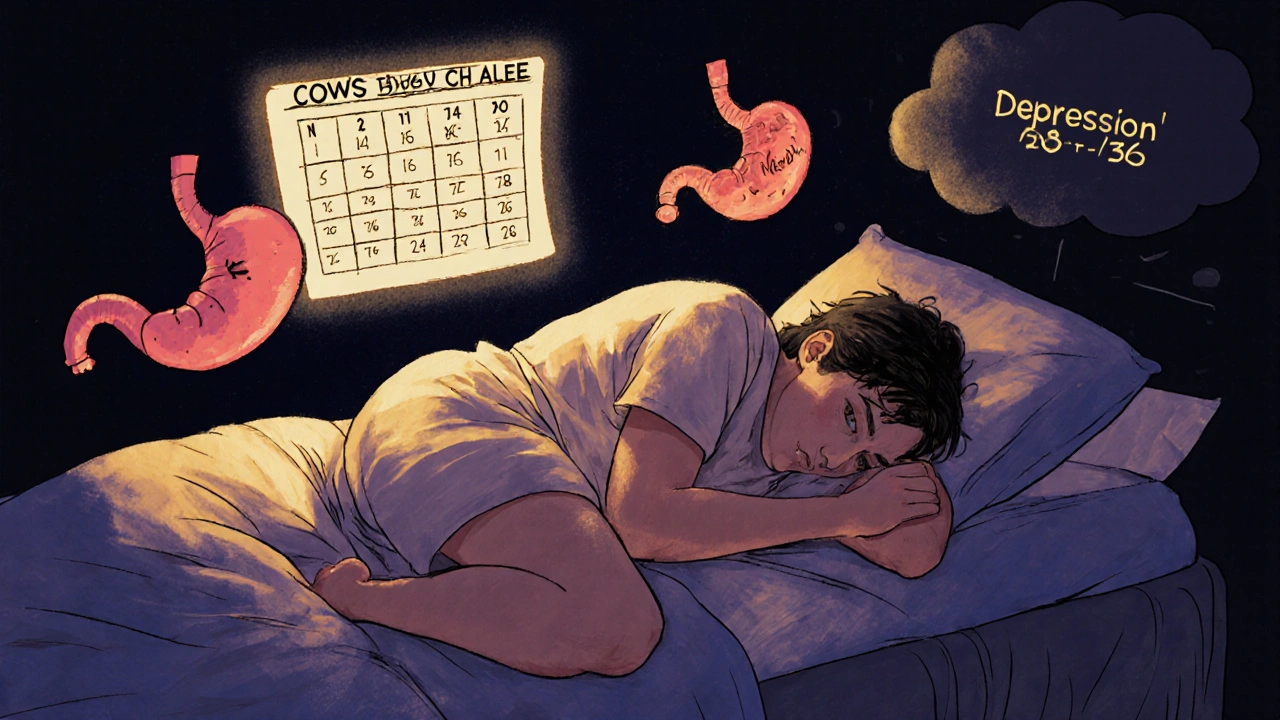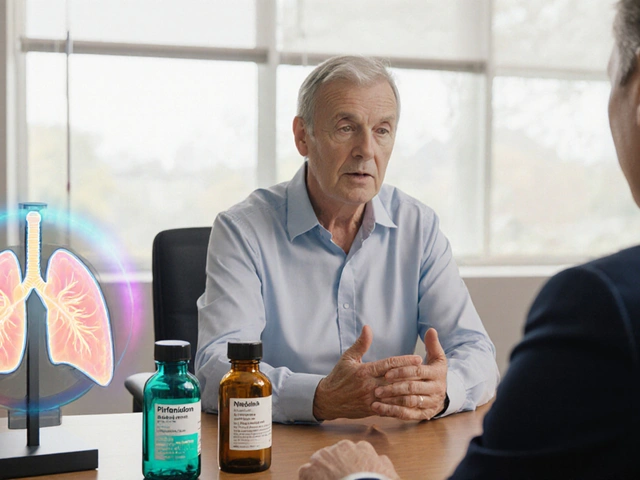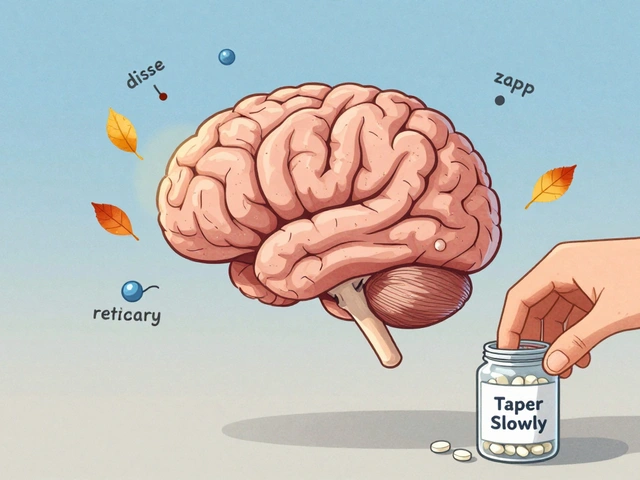Opioid Withdrawal Timeline Calculator
Enter your last opioid dose details to see when withdrawal symptoms will begin and progress. This tool is for informational purposes only and does not replace medical advice.
When someone stops using opioids after relying on them for weeks or months, their body doesn’t just adjust-it reacts. The physical and emotional crash that follows isn’t weakness. It’s biology. Opioid withdrawal is a predictable, time-based process with stages that unfold like clockwork. Knowing what to expect-and how to handle it-can mean the difference between giving up and moving forward.
When Does Withdrawal Start?
The moment you stop taking opioids, your body begins counting down. But the clock doesn’t tick the same for everyone. It depends on what you were taking. If you were using short-acting opioids like heroin, oxycodone, or hydrocodone, symptoms usually show up between 8 and 12 hours after your last dose. You might feel restless, start yawning, or get a runny nose. These early signs are easy to ignore. People often think they’re just tired or coming down with a cold. Long-acting opioids like methadone or extended-release oxycodone play a different game. Symptoms don’t show up until 24 to 36 hours after the last dose. That delay can be misleading. Some people think they’re fine because they don’t feel sick right away. Then, suddenly, the full force hits.The Three Phases of Withdrawal
Withdrawal doesn’t hit all at once. It comes in waves. Phase One: Early Stage (6-24 hours) This is when the body starts screaming for the drug it’s been used to. You’ll feel flu-like: achy muscles, watery eyes, a stuffy nose, sweating, and trouble sleeping. Anxiety kicks in. You might feel irritable or on edge. Nausea starts to creep in. At this point, most people still believe they can tough it out alone. They can’t. Phase Two: Peak (48-72 hours) This is the worst. By day two or three, symptoms intensify. Stomach cramps, vomiting, and diarrhea become common. Your pupils dilate. You feel cold even when you’re sweating. Muscle spasms and shaking are normal. Heart rate and blood pressure rise. Sleep is impossible. Depression hits hard. Many people relapse during this window-not because they want to use, but because the discomfort feels unbearable. Phase Three: Decline (Days 7-14) The physical symptoms start to fade. Diarrhea slows. Nausea eases. Body aches lessen. But the emotional toll lingers. Insomnia, anxiety, irritability, and low mood can stick around for weeks. This is where most relapses happen. People think they’re done because the physical pain is gone. They’re wrong. The brain is still rewiring.What Makes Withdrawal Dangerous?
Opioid withdrawal itself rarely kills. But the risks around it do. Severe vomiting and diarrhea can lead to dangerous dehydration. Electrolytes like sodium and potassium drop. Without fluids and replacement, this can cause heart rhythm problems. Studies show 12-15% of people who try to quit cold turkey at home end up with serious electrolyte imbalances. The biggest danger? Relapse. When you stop using opioids, your tolerance drops fast. If you go back to using the same dose you used before, your body can’t handle it. Overdose risk jumps 3 to 5 times in the first four weeks after detox. That’s not a guess. It’s data from the Cleveland Clinic and the CDC.
How to Manage Symptoms-The Proven Ways
There are two paths: going it alone, or getting medical help. The first is risky. The second saves lives. Medication-Assisted Treatment (MAT) Three FDA-approved drugs are the gold standard:- Buprenorphine (Suboxone): Reduces withdrawal symptoms by 60-70%. It blocks cravings without causing a high. It’s taken as a tablet or film under the tongue. Since 2021, any licensed doctor can prescribe it-no special waiver needed.
- Methadone: A long-acting opioid that eases withdrawal and prevents cravings. Taken daily at a clinic. You don’t need to go through withdrawal first to start it. That’s a myth.
- Naltrexone: Blocks opioids entirely. Used after detox. Won’t help with withdrawal symptoms, but stops relapse. Comes as a daily pill or monthly injection.
How Long Does It Really Take?
Short-acting opioids: 5-7 days of acute symptoms. Full recovery? 2-4 weeks. Long-acting opioids: 10-14 days of acute symptoms. Emotional symptoms? Can last 1-3 months. That’s the reality. You can’t speed up your brain’s healing. But you can make the process safer.
What Works Best: The Numbers Don’t Lie
Detox alone? Only 20-25% of people stay off opioids after just withdrawal. Detox + 6-12 months of medication-assisted treatment? 40-60% stay in recovery. That’s more than double the success rate. The global opioid treatment market is growing fast-projected to hit $4.1 billion by 2027. Buprenorphine, especially Suboxone, makes up 65% of that. Why? Because it works. It’s safe. It’s accessible.What to Do Next
If you or someone you know is thinking about quitting opioids:- Don’t wait until you’re in crisis. Talk to a doctor before you stop.
- Ask about buprenorphine or methadone. You don’t need to suffer first.
- Find a program that offers COWS monitoring and hydration support.
- Plan for ongoing treatment after detox. Recovery isn’t a detox-it’s a process.
How long do opioid withdrawal symptoms last?
Physical symptoms peak at 48-72 hours and usually fade within 7-10 days for short-acting opioids like heroin or oxycodone. For long-acting opioids like methadone, symptoms can last 14 days or more. Emotional symptoms like anxiety, depression, and trouble sleeping may linger for weeks or months. Recovery isn’t just about the physical detox-it’s about healing the brain.
Is opioid withdrawal life-threatening?
Withdrawal itself is rarely fatal in healthy adults. But complications like severe dehydration from vomiting and diarrhea can lead to dangerous electrolyte imbalances. The biggest risk is relapse after detox, when tolerance drops. Overdose risk increases 3-5 times in the first four weeks. Medical supervision reduces these risks significantly.
Can I quit opioids without medication?
Some people do, but it’s risky and often unsuccessful. Without medication, withdrawal is more intense, and relapse rates are high-around 75-80%. Medications like buprenorphine reduce symptoms by 60-70%, making it far easier to stay off opioids. The goal isn’t to just stop using-it’s to stay stopped.
What’s the difference between methadone and buprenorphine?
Methadone is a full opioid agonist-it activates the same brain receptors as heroin or oxycodone, but more slowly. It’s taken daily at a clinic. Buprenorphine is a partial agonist-it reduces cravings and withdrawal without causing a strong high. It’s safer, has less risk of overdose, and can be prescribed by any licensed doctor. Buprenorphine is now the most common treatment in the U.S.
Can I start buprenorphine without going through withdrawal first?
Yes. You don’t need to be in full withdrawal to start buprenorphine. In fact, waiting until you’re sick can make treatment harder. Doctors now recommend starting buprenorphine as soon as you’re ready-even if you still have opioids in your system. This approach, called "induction," is safer and more effective than forcing withdrawal first.
What should I eat during opioid withdrawal?
Stick to bland, easy-to-digest foods: bananas, rice, toast, applesauce, broth. Avoid sugar, caffeine, and greasy meals-they worsen nausea and anxiety. Drink 2.5-3 liters of fluids daily, preferably with electrolytes. Oral rehydration solutions (like those used for diarrhea) are better than plain water. Small, frequent meals help your body recover faster.
How do I know if I need medical help for withdrawal?
If you’ve been using opioids daily for more than a few weeks, or if you have other health conditions like heart disease, diabetes, or liver problems, you need medical supervision. Signs you need help: severe vomiting or diarrhea, confusion, rapid heartbeat, chest pain, or extreme anxiety. Don’t wait. Call a clinic or doctor before you quit.









Joe Durham
20 Nov 2025 at 20:38I’ve seen this play out with my brother. He was on oxycodone for years after a back injury, and when he tried to quit cold turkey, he was in hell for a week. The vomiting, the sweats, the insomnia-it looked like he was dying. But once he got on Suboxone, something shifted. Not magic, but real. He’s been clean 14 months now. No judgment, no stigma. Just science. If you’re reading this and thinking you can tough it out, please don’t. Help is quieter than you think, but it’s there.
And yeah, the COWS scale? Real. My brother’s doctor used it every visit. It made him feel seen, not just ‘a junkie.’ That matters more than people admit.